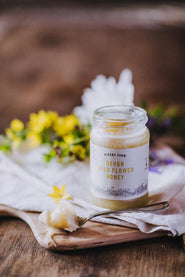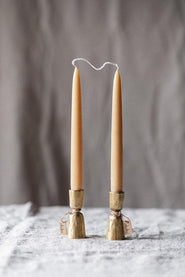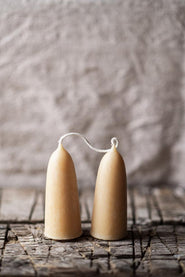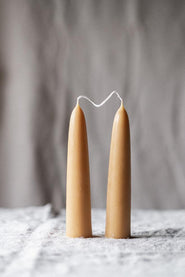Britain’s bees are in trouble, they’ve lost much of their natural habitat in the past 60 years – including 97% of wildflower-rich meadows. And they're under assault from pesticides and intensive farming.
35 UK bees species are under threat of extinction, and all species face serious threats, but we can help them with just a few simple actions.
Plant Wild Flowers and Herbs
If you have a few acres or just a window box, wildflowers can be sown anywhere and are the best way to encourage bees.
Common herbs are among some of the best plants in providing bees with valuable nectar and pollen throughout the year. They also happen to be some of the best herbs for cooking with. These popular herbs are easy to grow and will save you money on your shopping bill too.
Bee Friendly Flowers and Herbs
Wild Marjoram * Fennel * Mint * Borage * Chives * Rosemary * Sage * Thyme * Dill * Hysopp * Red Clover * Poppy * Lavender * Cornflower *

Build a Bee Cottage
Solitary bees aren’t like honeybees that live in hives. As their name suggests, they make their nests on their own and lay their eggs in tunnels, such as in dead wood or hard soil.
You can make your Bee Cottage at any time of the year, but spring is when potential residents are queueing up for the best abode.
Sit and watch adult female bees find the nest on sunny days in spring. You’ll know they’re nesting if you see them flying in with pollen (some carry it on their bellies), with blobs of mud to create cell walls along the tube.
How to Make a Bee Cottage
All you need to make a comfortable home for your bees are plenty of hollow stems of different diameters (including the bees’ preferred 3-5 mm), such as bramble, hogweed, reed or bamboo. An untreated wooden plank, at least 10 cm wide. Saw, drill, screws and secateurs. A mirror fixing to hang the finished nest up.
Cut the plank into four to make a rectangular frame that the stems will sit inside.
Drill guide holes for the screws (to stop the wood splitting) and assemble the frame.
Snip your stems into lengths to fit the frame (as wide as the plank), discarding any bent or knobbly ones. It’s a good idea to include some really big stems (cut with a fine saw), even though they’re no use to the bees; they speed up the assembly stage, look attractive and help shelter lacewings and ladybirds over winter.
Lay your frame on a tilted surface and carefully pack it with stems. Only as you add the final few does the whole thing suddenly lock solid.
Hang your Bee Cottage on a sunny wall, sheltered from rain.
Support Bee Friendly Farmers
We believe a sustainable approach to farming is essential for a healthy environment and healthy food. As custodians of our land, it is our job to nurture every inhabitant of Pipers Farm, from the worms who are nourishing our soil, to the bees who are pollinating our flowers and grasses.
Our fields are small and the 400-year-old hedgerows surrounding them are 2 or 3 meters wide. They are priceless reservoirs of biodiversity and natural corridors for wildlife, full of wildflowers such as; wild orchids, bluebells, viola, blackthorn, rosehip, honeysuckle, cow parsley, primrose and three-cornered garlic to name just a few. Part of the management of our farm is the nurturing and regular sowing of wildflowers to encourage an array of bug life.
Choosing where you shop can have a direct impact on the health of our countryside. We encourage you to support farmers who are regenerating our countryside, avoiding pesticides and chemical fertilisers and actively nurturing nature.

Ask the Government to Reduce Pesticides
Too much of our countryside is being routinely doused with a cocktail of chemicals. This needs to change. Farmers need to get off the chemical treadmill. Bee-harming neonicotinoid pesticides will now be banned on all outdoor crops. But more must be done to stop pesticides contaminating our countryside and our food and harming our wildlife.
The government is writing its new policy for farming after Brexit. This is the perfect opportunity to make sure pesticide reduction is at the heart of farming in the UK. Sign the petition to make sure there's a clear plan to reduce pesticides and make the countryside a safer place for wildlife.

Take Part in a Bee Survey
Help the government’s new 'Pollinator Monitoring Scheme' by taking part in the Flower-Insect Timed Count. This is a quick and easy way to survey the pollinators on your patch. It’s perfect for beginners since you don’t need to identify particular species. It’s a great way to learn about pollinator diversity too.






